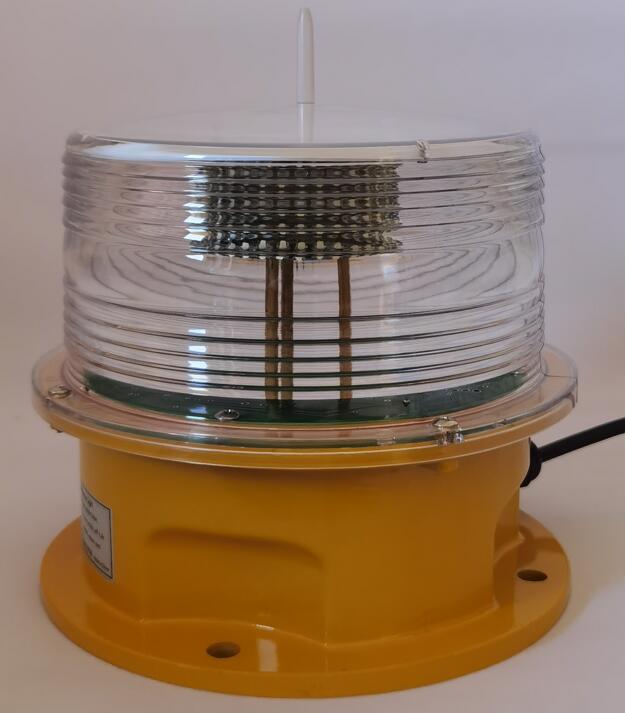The Indispensable Role of a Heliport Rotating Beacon in Modern Aviation
In the fast-paced world of aviation, safety and precision are paramount. For heliports, ensuring that pilots can locate and navigate to their landing zones with ease is a critical responsibility. One of the most effective tools for achieving this is the heliport rotating beacon. This powerful lighting system not only enhances visibility but also plays a vital role in ensuring compliance with aviation safety standards. In this article, we’ll explore the importance of heliport rotating beacons, their functionality, and why they are a must-have for any heliport operation.
What Is a Heliport Rotating Beacon?
A heliport rotating beacon is a high-intensity lighting device designed to mark the location of a heliport, particularly during nighttime or low-visibility conditions. Unlike static lights, a rotating beacon emits a sweeping, 360-degree beam that is highly visible from long distances. This rotating motion ensures that the light is seen from all angles, making it an invaluable tool for guiding pilots to the heliport safely.

Why Heliport Rotating Beacons Are Essential
Heliport rotating beacons are more than just a convenience—they are a necessity for ensuring safety and operational efficiency. Here’s why:
1. Unmatched Visibility
The rotating motion of the beacon creates a dynamic light pattern that is easily distinguishable from other lights in the area. This makes it easier for pilots to identify the heliport, even in densely populated urban environments or adverse weather conditions.
2. Nighttime and Low-Visibility Operations
Heliports often operate around the clock, and weather conditions can change rapidly. A heliport rotating beacon ensures that the landing zone remains visible, reducing the risk of accidents and improving operational reliability.
3. Regulatory Compliance
Aviation authorities, such as the International Civil Aviation Organization (ICAO) and the Federal Aviation Administration (FAA), require heliports to be equipped with rotating beacons as part of their safety regulations. Installing a compliant beacon ensures that your heliport meets these standards, avoiding potential fines or operational disruptions.
| heliport rotating beacon |
| heliport rotating beacons |
4. Emergency Preparedness
In emergency situations, such as medical evacuations or search-and-rescue missions, every second counts. A heliport rotating beacon helps emergency helicopters locate the landing zone quickly, ensuring timely response and potentially saving lives.
Key Features of a High-Quality Heliport Rotating Beacon
When selecting a heliport rotating beacon, it’s important to choose a device that offers reliability, durability, and performance. Here are some key features to look for:
1. High-Intensity Light Output
A quality heliport rotating beacon should produce a bright, focused beam that can be seen from miles away. This ensures visibility even in challenging conditions like fog, rain, or darkness.
2. Durability and Weather Resistance
Heliport rotating beacons are exposed to harsh environmental conditions, including extreme temperatures, wind, and rain. Look for beacons made from robust materials with weather-resistant coatings to ensure long-lasting performance.
3. Energy Efficiency
Modern heliport rotating beacons often use LED technology, which provides bright light while consuming less energy. This not only reduces operational costs but also minimizes maintenance requirements.
4. Compliance with Aviation Standards
Ensure that the beacon meets international aviation standards, such as those set by ICAO or FAA. This guarantees that your heliport remains compliant with safety regulations.
Applications of Heliport Rotating Beacons
Heliport rotating beacons are used in a variety of settings, each with its own unique requirements:
1. Hospital Heliports
For hospitals with helipads, a rotating beacon is essential for guiding air ambulances during emergency landings, especially at night or in poor weather.
2. Offshore Heliports
Offshore oil rigs and platforms rely on rotating beacons to guide helicopters safely to their landing zones, even in the challenging conditions of open water.
3. Urban Heliports
In densely populated urban areas, rotating beacons help distinguish the heliport from surrounding buildings and lights, ensuring safe navigation for pilots.
4. Military and Government Facilities
Military bases and government facilities use rotating beacons to support critical operations, including troop transport and emergency response.
The Benefits of Installing a Heliport Rotating Beacon
Investing in a high-quality heliport rotating beacon offers numerous advantages:
1. Enhanced Safety
The primary benefit is improved safety for pilots, passengers, and ground personnel. By clearly marking the heliport, the rotating beacon reduces the risk of accidents and ensures smooth operations.
2. Operational Efficiency
A well-marked heliport allows for faster and more efficient landings and takeoffs, which is particularly important in time-sensitive operations like EMS or disaster response.
3. Regulatory Compliance
Installing a compliant rotating beacon ensures that your facility meets aviation safety standards, avoiding legal issues and potential fines.
4. Cost-Effectiveness
While the initial investment in a rotating beacon may seem significant, the long-term benefits—such as reduced accident risks and lower maintenance costs—make it a cost-effective solution.
A heliport rotating beacon is an essential safety device that ensures the visibility and functionality of a heliport in all conditions. Whether you’re operating a hospital helipad, an offshore platform, or an urban heliport, investing in a reliable rotating beacon is a decision that enhances safety, improves efficiency, and ensures compliance with aviation regulations.
Don’t compromise on safety—choose a high-quality heliport rotating beacon today and take the first step toward creating a safer, more efficient heliport operation. Your pilots, passengers, and ground crew will thank you.
